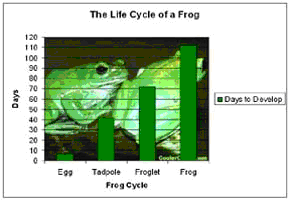

|
|
Adventures in Life Sciences Life Science is a standard studied in all grade levels. Think about the areas of life science that are taught in your grade level and see how they might be integrated into reading/language arts, mathematics, and social studies. |
||||||||||||||||||||||||
 |
Scientific Processes Identifying the scientific processes used when investigating a concept leads to the development of higher cognitive understanding and increased academic achievement in science. The process skills included may be laminated and provided to students to sort and think about what processes they used in their investigations. Debrief with students the processes after each investigation to help students internalize the process skills. • Process
Skills (pdf) |
|||||||||||||||||||||||||
 |
How Long Do I Have to Wait Before I Can Fly?
|
|||||||||||||||||||||||||
 |
|
Activity 1: Scientific Journal Students will keep a scientific journal of their observation and research
on a content standard of the teacher's choice. Before providing students
with scientific journals, ask them them why journals are important
to scientists. What sorts of things are written in a scientific journal?
What can we learn from a scientific journal? Why is it important
for scientists to keep journals? |
||||||||||||||||||||||||
Create a scientific journal for students
that may be used for a specific science concept that you are studying.
|
||||||||||||||||||||||||||
 |
|
|||||||||||||||||||||||||
Students will study the life cycles of a mealworm, frog, and butterfly through observation and research. In this activity images from the Web or digital camera will be used to create postcards depicting various stages of the life cycle.
3. Have students arrange their group of postcards in the order of
the life cycle. Gathering Images and Creating the Postcards To find images for creating the postcards go to the search engine Google. Click on the Image tab and type in the search box the name of the image you need such as frogs, mealworms, or butterflies. The images may be inserted into a Word document or postcards may be created in Publisher and printed on card stock. Create Post Cards in Microsoft Publisher • Open Publisher by clicking the start button at the lower left hand
corner of the screen. Suggestions for Other Grade Levels: The following
is a list of possible ideas for each grade level based on the standards
taught in the elementary grades. |
||||||||||||||||||||||||||
 |
|
|||||||||||||||||||||||||
 |
Adding to Your Adventure Curriculum Extensions to Integrate the Adventure: |
|||||||||||||||||||||||||
|
||||||||||||||||||||||||||







